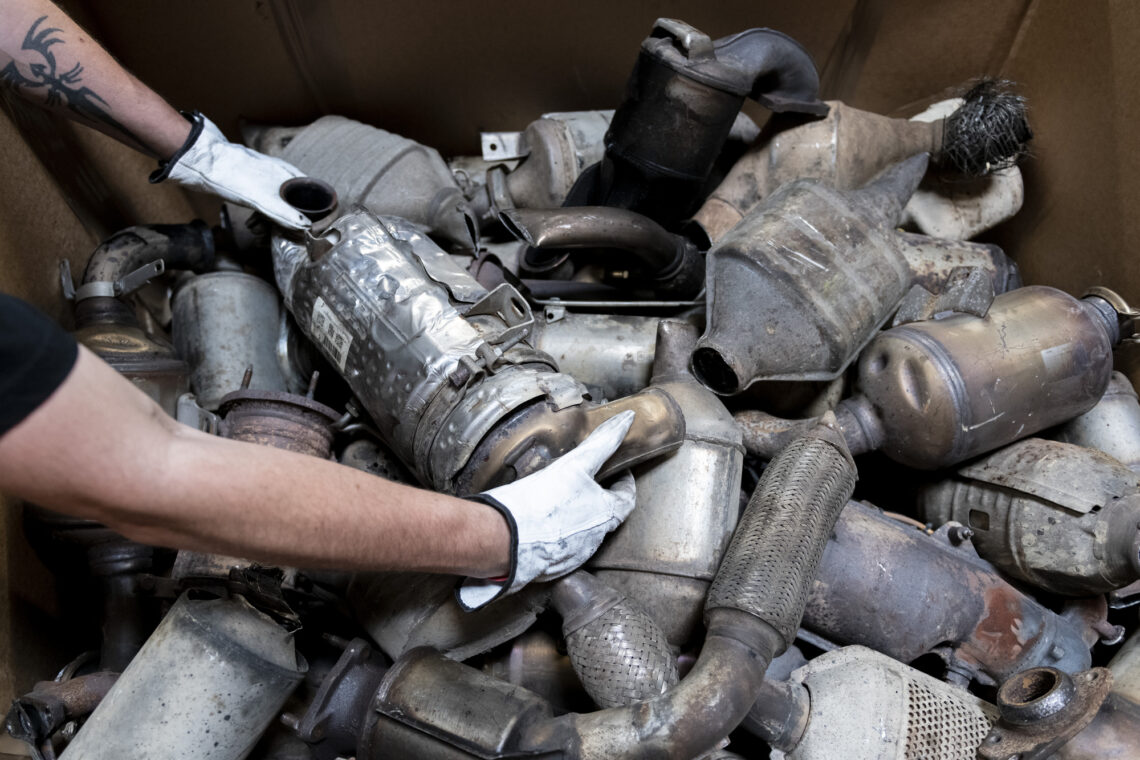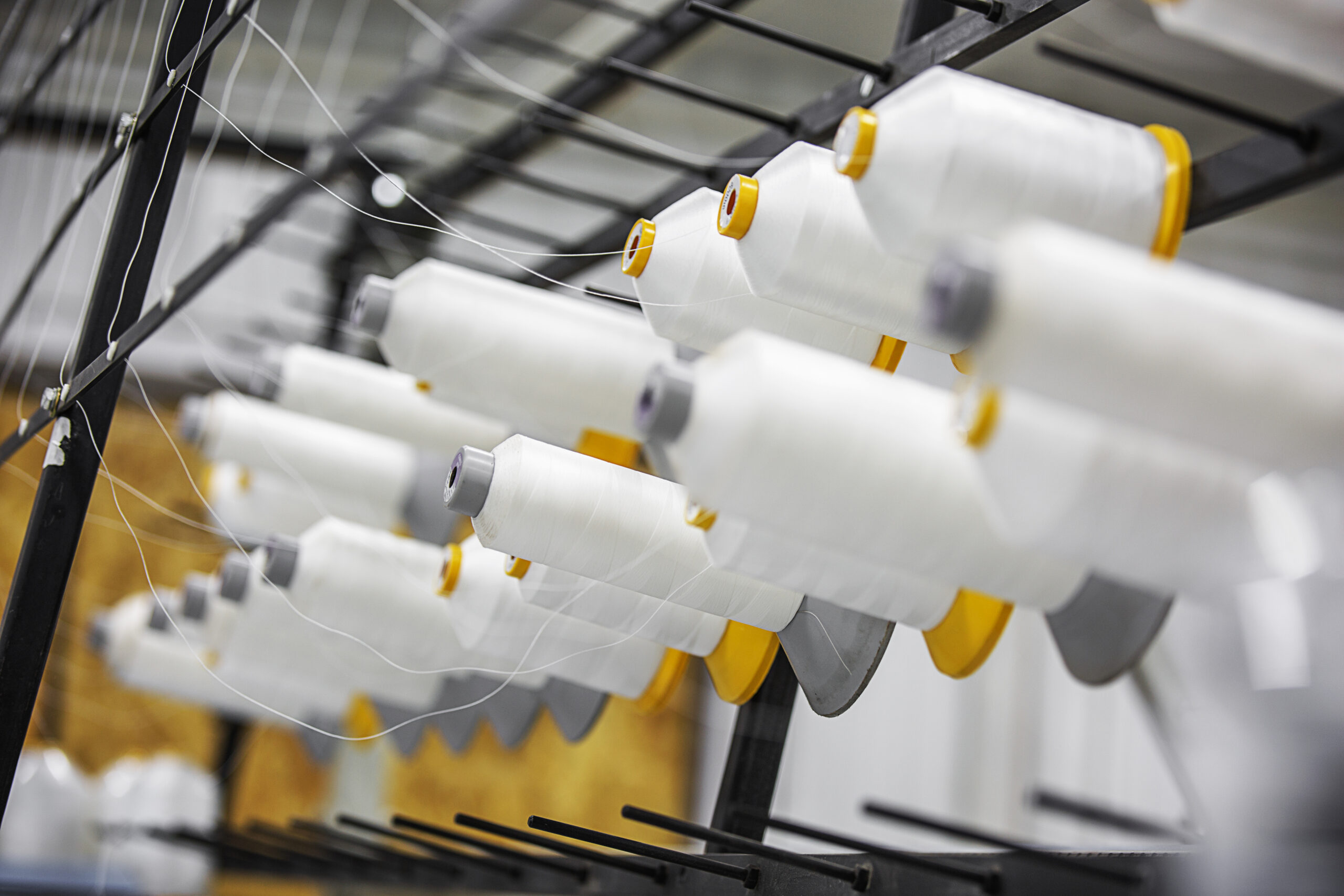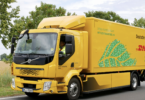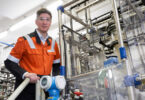The auto industry is responsible for around 10% of greenhouse gas emissions but its impact on the environment doesn’t end there. Cars consume a lot of energy before they ever hit the highway. Automotive production leaves a giant footprint because materials like steel, rubber, glass, plastics, paints, and many more must be created. And, at the end of a car’s life plastics, toxic battery acids, and other products end up in trash dumps and may stay in the environment.
Under pressure from regulators and consumers car makers have set targets for carbon neutrality and are investing heavily in electrification, new service offerings and new mobility solutions. They are also replacing materials inside cars with greener alternatives. For example, Volvo Group is recycling discarded fishing nets into carpets for its premium EV sub-brand Polestar; BMW is making trim parts for its Neue Klasse from recycled fishing nets and ropes; Audi is constructing seats made with yarn from plastic bottles.
But these moves are not enough for the industry to get to Net Zero. Car companies must cut both upstream and downstream emissions to meet the Paris Agreement’s zero emission targets for 2050.
France’s Renault Group, which has created what it claims is the first 360°circular economy company in the automotive world, believes it has the solution for the materials footprint. Its name says it all: The Future is NEUTRAL.
The company wants to use old cars to build new ones, without drawing on new natural resources and says it is the first to operate across the entire value chain, from procurement to production to end-of-life recycling.
The project has four priorities – increasing the lifespan of vehicles, developing closed-loop recycling of batteries, optimizing the ability to dismantle end-of-life vehicles and re-use parts, and accelerating education, research, and development around the circular economy model. It is targeting the entire European auto industry.
“We want our customers to see The Future Is NEUTRAL as part of the solution in the same way that Gmail is as obvious in email,” CEO Jean-Philippe Bahuaud, Renault’s former head of strategy, said in an interview with The Innovator at the Change Now conference in Paris March 26. Bahuaud was a speaker at the conference, which focuses on concrete ways to transition to a more sustainable world.
Some 85% of the materials used in cars could be recycled and used to make new cars, says Bahuaud. The material is readily available in car-dismantling and industrial waste sites and is constantly renewed in large quantities. It only needs to be valued. “We are doing this by putting back the waste into the production loop, to create economic and environmental value,” he says.
In 2023 The Future is NEUTRAL’s activities generated almost €1 billion inturnover. And it is just the start. By 2030 the company hopes to double its activities, with the ambition to start a closed-loop battery recycling activity and generate a turnover of €2.3 billion.
The value to the environment is clear. The Future is NEUTRAL says that a year’s worth of recycled steel from end-of-life vehicles could cover 70% of Europe’s vehicle production needs. By 2030, if all polypropylene from EOL vehicle were recycled it could cover up to 20% of Europe’s vehicle production needs. A year’s worth of recycled copper in EOL would cover all of Europe’s Electric vehicle production needs and by 2030 if all platinum was recovered from the exhaust systems of EOL vehicles it would cover more than all of the needs of the Continent’s automotive sector.
Worldwide the adoption of circular economy practices combined with accelerated electrification in the automotive industry has the potential to reduce carbon emissions by up to 75%, according to a report from Accenture, the World Economic Forum, and the World Business Council for Sustainable Development. Mobility demand is expected to increase 70% globally by 2030, according to Accenture. The report says the automotive industry can prepare for this demand, while also decarbonizing, by achieving circularity in energy, water, waste, materials, vehicle lifetime and use.
What’s more circularity can enable automakers and mobility providers to tap new sources of value beyond the limits of their current business models — with an opportunity to improve profitability across the value chain by 50% and generate lifetime revenues 15 to 20 times greater than the vehicle’s initial sales price, according to a follow-up report from the same authors. The report says the greatest value pools would be achieved mainly through as-a-service models, including leasing/subscription, car sharing, and mobility as a service, as well as through lifecycle services of remanufacturing, repair and recycling.
Driving Circularity
The Future is NEUTRAL was launched in 2022 at the behest of Renault CEO Luca de Meo. He put 30 people from the group in a room to strategize about the future. “We knew we had to do something with circular economy,” says Bahuaud. “Scattered activities launched by a few courageous visionaries already existed within Renault but there were invisible inside the group,” he says. “We didn’t have one jersey under which we could operate so we needed to create an entity that could carry all of that.” He was appointed to run it.
The challenge was “how to make these activities more visible, bigger, and big enough from an operational standpoint that they would be effective,” says Bahuaud. “We had to make sure that the reach included not just Renault but to open up to target other OEMs like Nissan, Mercedes, VW or Stellantis.”
Although the project is 100% owned by the Renault Group it was spun outside and serves as a holding for a group of operational activities:
- INDRA: The French leader in automotive recycling with European ambitions, Indra recovers End-of-Life (EOL) vehicles from impound yards, insurers, garages, dealerships, and private individuals, and consults on the dismantling process. The company, which was launched in 1998, has 370 approved centers and dismantles 400,000-600,000 vehicles per year It is co-owned by Renault and Suez, a French-based utility company which operates largely in the water and waste management sectors.
- Boone Comenor Metalimpex, which has been operating since 1899, is a leading recycler of scrap metals from industry. The company, which recycles around 1.8 million tons of steel a year, is 67% owned by Suez and 33% by the Future is NEUTRAL. With operations on four continents, including 15 subsidiaries and 47 sites in Europe, Boone Comenor Metalimpex specializes in the collection, sorting, and recovery of metal waste for the industrial sector, serving automotive, railways, aerospace, foundries and steel manufacturers.
- GAIA, a pioneer in closed loop recycling of copper, polypropylene and precious metals such as platinum, palladium and rhodium. GAIA also operates the Expert Battery Repair Center, leveraging its expertise in maximizing the time in which batteries remain in automotive use. In 99% of cases, batteries can be repaired, says the company. But when the remaining capacity is no longer compatible with the autonomy required for automotive use, the batteries are prepared for a second life in the energy sector. GAIA also reuses parts from dismantled cars and overstock from after-sales and end-of-series vendors. GAIA is hosted on the site of Renault’s Refactory in Flins, France.
In December The Future is NEUTRAL announced that it will develop the remanufacturing activities of the Flins Refactory in order to create a European leader in parts reconditioning services, serving the entire automotive sector, with a stronger lead in electrification and a product portfolio adapted to an ageing fleet of combustion engine cars.
By becoming a subsidiary of The Future is NEUTRAL, the remanufacturing arm will benefit from an acceleration of its development with a reinforced investment and recruitment plan, says The Future In NEUTRAL. The ambition is to double investments and increase revenues by more than 50% by 2030.
Remanufacturing refers to the reconditioning of mechanical (engine, gearbox, turbo, injector, etc.) and mechatronic (R-Link embedded systems) components that are out of service to a level of quality equivalent to the original manufactured part, thanks to a combination of reused, repaired, and new parts. It represents an alternative that is more environmentally friendly (fewer new resources used, up to 85% energy savings and up to 96% water savings compared to the production of a new part) and more economical for the customer (up to 40% cheaper than a new part), according to The Future Is NEUTRAL.
Bahuaud envisions these entities working in concert to help consumers buy greener cars. Say, for example, Jean-Pierre’s car, which is 17 years old, starts to show some signs of wear. He goes to the repair shop and buys a reconditioned engine with a one-year warranty for a fraction of the cost of a new one. Eventually he falls in love with a new model and decides to trade in his car. INDRA dismantles it, the materials are made available to GAIA, which buys the parts and transforms them into virgin-like materials, and the story starts again. “We want to democratize this process,” he says.
To grow, Renault has decided to open the capital of The Future is NEUTRAL. In the first stage it will seek industrial players to become strategic investors and help grow the activity. In a second phase it will look for financial investors. “Renault has the courage and the vision to serve the needs of the entire industry and we are going to open the capital to do that,” he says.
Toward Circular Cars
Renault is not alone in embracing the circular economy. Industry collaboration already includes the World Economic Forum’s Circular Cars Initiative, which was launched in 2020. The initiative, which includes over 30 players from the global auto industry, aims to align the industry on the most pressing challenges and best practices.
Some individual brands have made progress, In November of last year Stellantis, which includes Alfa Romeo, Chrysler, Citroën, Dodge, DS Automobiles, Fiat, Jeep, Lancia, Maserati, Opel and Peugeot, opened a SUSTAINera Circular Economy Hub in Turin, Italy. The Company said at the time that it has a plan to foster its circular economy ambitions with a 360-degree approach.
The stated primary objectives of Circular Economy Hub is to extend the life of parts and vehicles. When that is no longer possible, the material is collected for recycling from the remanufacturing activity, and from the end-of-life vehicle dismantling activity, and then returned to the manufacturing loop to build new vehicles and parts. The CE Hub will initially host four activities:
- Remanufacturing: used, worn, or defective components, such as engines, gearboxes and EV batteries are disassembled, cleaned, and remanufactured to original OEM specifications, without compromising quality. The goal is to offer a sustainable and affordable alternative available under the SUSTAINera label within the Stellantis spare parts offer. The facility expects to manage over 50,000 remanufactured parts by 2025, rising to 150,000 by 2030.
- Sorting Center: an estimated 2.5 million worn parts, known as cores, will supply the facility’s remanufacturing and recycling activities by 2025, increasing to 8 million by 2030.
- Vehicle Reconditioning: vehicles will be repaired aesthetically and mechanically using new, remanufactured or used parts and then reintroduced through SPOTiCAR, Stellantis’ manufacturer-certified used-vehicle program, and the Stellantis &You, Sales and Services network.
- Vehicle Dismantling: at the end of their life cycle, vehicles become a precious resource for parts to be remanufactured, reused or as material for recycling. Specifically, the used OEM parts managed by the CE Hub will integrate the stock available from our partner B-Parts to source the SUSTAINera Reuse offer.
Driving Change Is Hard
It is unclear what – if any- relationship there will be between The Future Is NEUTRAL and Stellantis’ initiative.
Bahuaud acknowledges “the way forward is going to be long,” he says. In markets outside of France The Future is NEUTRAL will need to ensure that the logistics and travel costs don’t override the benefits of circularity. “ It won’t be a one-size-fits-all approach,” he says. For example, the way cars are dismantled in France is different from the way they are dismantled in Germany. And in Germany many older cars end up being exported, making access to parts more complicated.
If there is one thing that Bahuaud says he has learned during Renault’s circular economy journey it is that inside each car company all stakeholders will need to get onboard. The CFO will ask what the EBITA is, the person in charge of Corporate Social Responsibility will want to know what are the gains in C02 avoidance, and the head of operations will have to be convinced that refurbished parts meet technical specs and are priced right, says Bahuaud.
Driving change industry-wide “is super complicated,” he says. It remains to be seen whether the rest of the European auto industry will get into gear.
This article is content that would normally only be available to subscribers. Sign up for a four-week free trial to see what you have been missing.
To access more of The Innovator’s Going Green articles click here.






